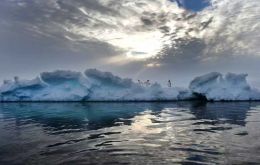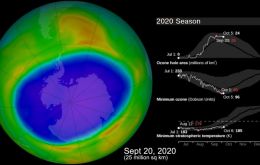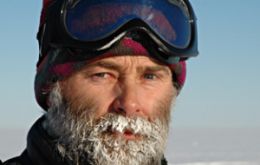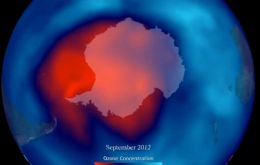MercoPress. South Atlantic News Agency
Tag: ozone hole
-
Wednesday, November 22nd 2023 - 23:27 UTC
Concern over the ozone layer hole evolution in austral mid spring, NZ report

The hole in the Antarctic ozone layer has been getting deeper in austral mid-spring over the last two decades, according to New Zealand researchers working with scientists from Otago University and published in a new study in the journal Nature Communications.
-
Wednesday, October 14th 2020 - 09:26 UTC
Ozone hole over Antarctica peaks at 24 million square kms, the highest for the last decade

The annually occurring ozone hole over the Antarctic is one of the largest and deepest in recent years. Analyses show that the hole has reached its maximum size. The 2020 ozone hole grew rapidly from mid-August and peaked at around 24 million square kilometers in early October. It now covers 23 million km2, above average for the last decade, and spreading over most of the Antarctic continent.
-
Monday, January 29th 2018 - 10:22 UTC
Ozone hole: NASA's satellite confirms 20% less depletion; recovery by 2080

Scientists have shown through direct satellite observations of the ozone hole that levels of ozone-destroying chlorine are declining. Measurements show that the decline in chlorine, resulting from an international ban on chlorine-containing man-made chemicals called chlorofluorocarbons (CFCs), has resulted in about 20% less ozone depletion during the Antarctic winter than there was in 2005, the first year that measurements of chlorine and ozone during the Antarctic winter were made by NASA's Aura satellite.
-
Friday, October 13th 2017 - 12:24 UTC
Ozone layer threatened by compounds (from China) not currently regulated

Rising global emissions of some chlorine-containing chemicals could slow the progress made in healing the ozone layer. A study found the substances, widely used for paint stripping and in the manufacture of PVC, are increasing much faster than previously thought. Mainly produced in China, these compounds are not currently regulated.
-
Tuesday, July 26th 2016 - 17:33 UTC
A recent pause in Antarctic Peninsula warming

The rapid warming of the Antarctic Peninsula, which occurred from the early-1950s to the late 1990s, has paused. Stabilisation of the ozone hole along with natural climate variability were significant in bringing about the change. Together these influences have now caused the northern part of the peninsula to enter a temporary cooling phase.
-
Wednesday, September 16th 2015 - 08:29 UTC
UN message on 30th anniversary of the convention for the protection of the ozone layer

Not so long ago, humanity stood on the brink of a self-inflicted catastrophe. Our use of ozone-depleting substances such as chlorofluorocarbons (CFCs) had torn a hole in the ozone layer that protects us from the sun’s harmful ultraviolet radiation.
-
Wednesday, September 17th 2014 - 01:52 UTC
UN hails progress achieved in reducing damage to the ozone layer

United Nations officials hailed on Tuesday the progress made in reducing damage to the ozone layer and the vital role played by one of the most successful environmental treaties in history in phasing out ozone-depleting substances.
-
Tuesday, October 29th 2013 - 00:10 UTC
Ozone hole slightly smaller than average this year, according to NASA

The ozone hole that forms each year in the stratosphere over Antarctica was slightly smaller in 2013 than average in recent decades, according to NASA satellite data. The ozone hole is a seasonal phenomenon that starts to form during the Antarctic spring (August and September). The September-October 2013 average size of the hole was 8.1 million square miles (21 million square kilometers).
-
Thursday, October 25th 2012 - 23:48 UTC
Antarctic ozone hole in 2012, the second smallest in the last 20 years, says NASA

The average area covered by the Antarctic ozone hole this year was the second smallest in the last 20 years, according to data from NASA and National Oceanic and Atmospheric Administration (NOAA) satellites. Scientists attribute the change to warmer temperatures in the Antarctic lower stratosphere.
-
Saturday, October 8th 2011 - 08:29 UTC
Santiago de Chile is experiencing highest levels or solar radiation since 2008

Ultraviolet (UV) radiation has increased three points compared to last September in Santiago de Chile, according to a study released by Chile’s National Cancer Corporation (Conac) and the UV monitoring network of the Universidad de Santiago (USACH).
